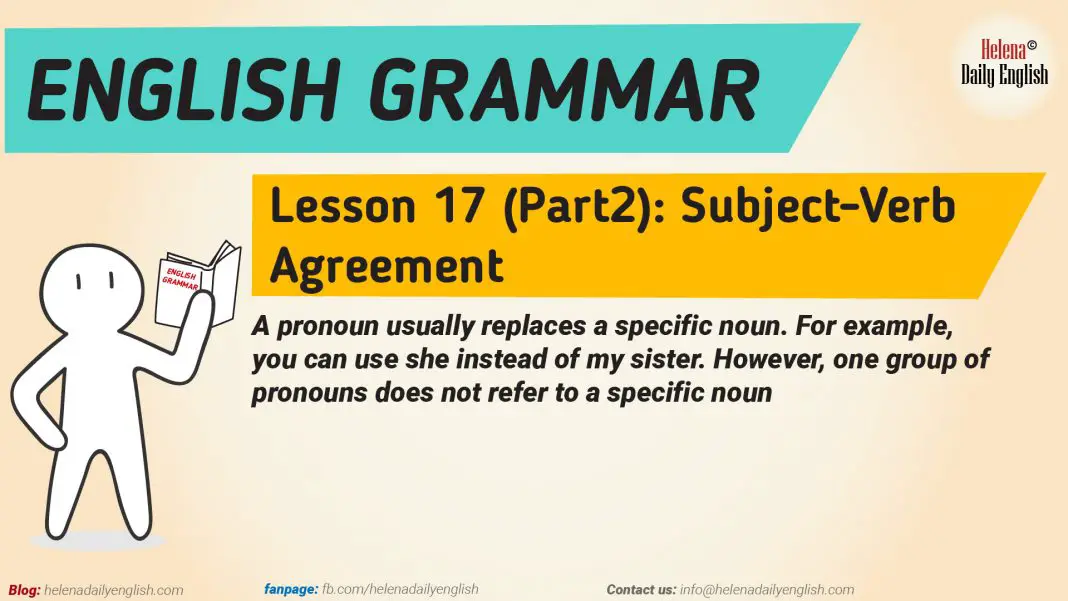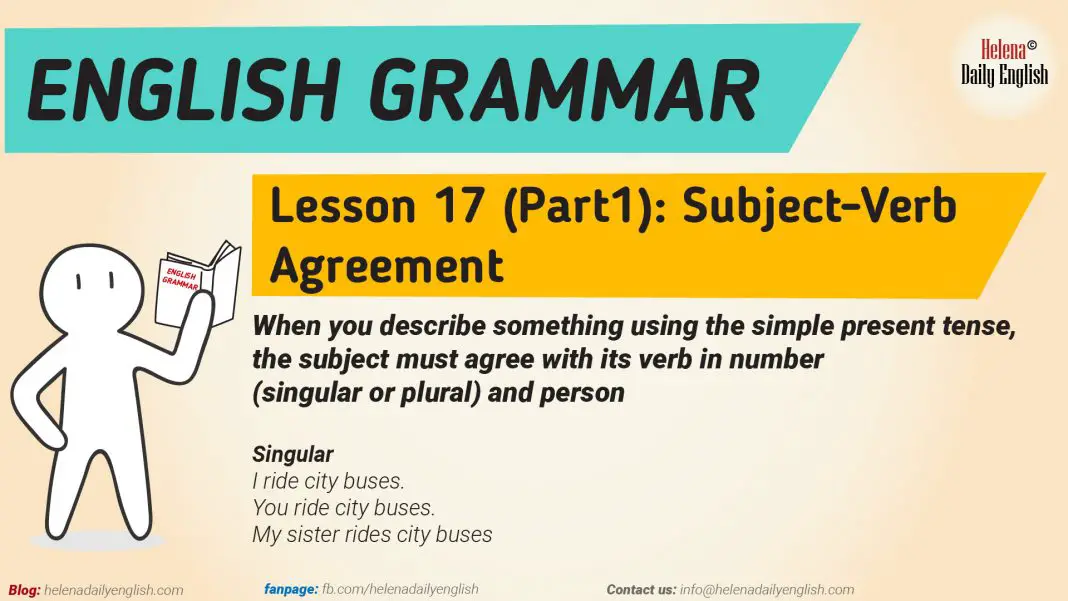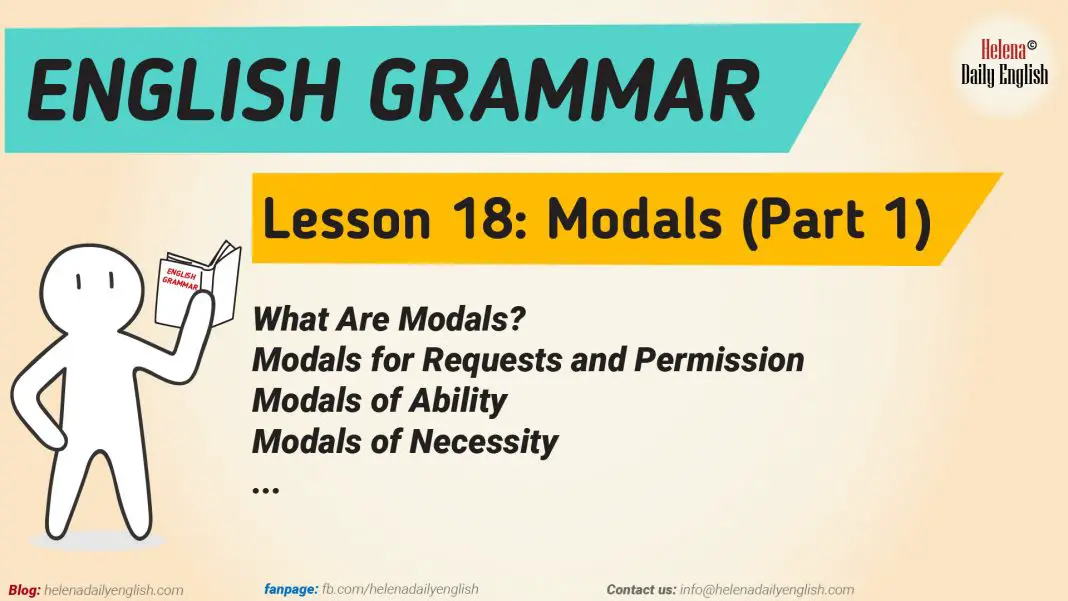Learn English Grammar: Lesson 17 (Part 2) – Subject-Verb Agreement
1. Subject-Verb Agreement: Witb Indefinite Pronouns
A pronoun usually replaces a specific noun. For example, you can use she instead of my sister. However, one group of pronouns does not refer to a specific noun. We call these indefinite pronouns. Examples of indefinite pronouns are someone and everybody.
Below is a list of common indefinite pronouns. Note that when indefinite pronouns are the subject of a sentence, they ALWAYS take a singular verb.
| every- | some- | any- | no- | |
| -one | everyone | someone | anyone | no one |
| -body | everybody | somebody | anybody | nobody |
| -thing | everything | something | anything | nothing |
- Everybody likes our new teacher Dr. Olsen.
- Something smells strange in the refrigerator.
- Anyone is welcome to the party
2. Subject + Prepositional Phrase + Verb
When the subject and the verb are separated by other words in a sentence, it can be difficult to make the subject and the verb agree. Sometimes subjects and verbs are separated by prepositional phrases that give additional information about the subject. When you are writing, be sure to connect the subject and the verb even if additional words separate them.
Ex: The little girl lives on Hudson Street.
SUBJECT VERB
The little girl in the blue and white sweater lives on Hudson Street.
SUBJECT PREPOSITIONAL PHRASE VERB
The houses near the supermarket are not for sale.
SUBJECT PREPOSITIONAL PHRASE VERB
Some common prepositions include in, near, at, on, to, and from.
3. Subject-Verb Agreement: With there + he
When we want to explain that something exists, we use the form there+be. The subject of the sentence is generally found after the verb be.
there + be + subject
Present tense: There is a huge delay on the highway right now.
VERB SUBJECT
There are almost 300,000,000 people in the United States. VERB SUBJECT
Past tense: There were five concerts at the amphitheater last weekend.
VERB SUBJECT
There was a problem at work, so I had to stay late.
VERB SUBJECT
When using there + be, remember to find the subject and make sure that it agrees with the form of be.





